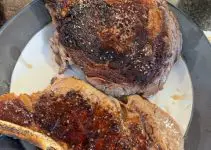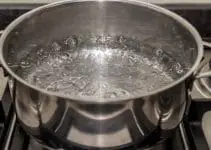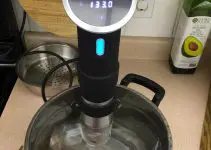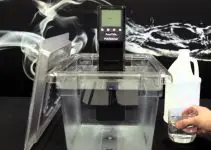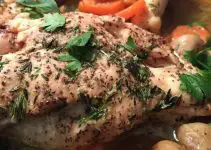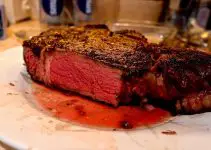Sous vide cooking and oven baking both use the same concept of indirect heat and longer cook times to produce tender meats and vegetables. Surprisingly, using a low temperature oven can produce similar results as sous vide cooking.
Oven Baking
Ovens go back to the middle ages, often in the form of cauldrons over fire or brick and mortar structures. Gas and electric ovens made their debut in the late 1800s and early 1900s, and are what the majority of us use for cooking.1 They are set to a certain temperature, but usually cycle, kicking on and off to regulate the temperature. Over time, ovens may need calibration to help ensure that they are cooking at the right temperature. The higher temperatures can also heat up a house, meaning that oven baking in warmer months could be less desirable than using a sous vide machine.
Heat transfer of ovens vs. sous vide
The heat in an oven is set much higher than what is used for sous vide cooking, because heat doesn’t conduct as well through air as it does through water (water is 10 times more effective at heat transfer than air). The longer cook time with a higher temperature means that the food could end up overcooked on the outer edges and not quite finished in the middle. Checking temperatures of food while it’s cooking can be a pain, and also lets a lot of heat out of the oven, making it more difficult to keep control of the temperature.
Using a sous vide machine in a water bath, temperature is precisely controlled (with less than one-degree fluctuation) to ensure perfect doneness of food. The long, slow temperatures gently heat food, without running the risk of overcooking (although too much time can lead to a less than optimal texture as proteins or cells continue to break down). They also don’t heat up the house, which is great for cooking during the warmer months. One thing to remember, though, is that as the water circulates it will evaporate; too much evaporation could leave the food exposed out of water, meaning that you’d run the risk of improperly cooking food. This might be a big drawback if you want to sous vide food while you aren’t home. Check out this article to learn more about food safety with sous vide.
Oven cooking as a close second to sous vide
But what if you don’t have a sous vide machine? Setting the oven at a lower temperature (still much higher than sous vide, about 275 degrees) can mimic sous vide, by gently heating meat to a safe internal temperature. I found an experiment done where two pork loins were cooked to an internal temperature of 140 degrees, one in the oven and one done sous vide.2 Both pork loins reached this temperature, with the oven version registering slightly higher temperatures on the outer edges, along with a slight discoloration. The sous vide pork loin did not have a temperature variation, nor did it have a change in color. Bottom line is that it wouldn’t be identical, but using an oven could provide similar results.
Another nice thing about cooking in an oven is that the higher temperature helps to cause a Maillard reaction on the outside of food, causing a brown, toasty, or even smoky/burned flavor. (Think crispy, crunchy, toasty cheesy edges of a lasagna or casserole, or brown, crisped chicken skin).
Differences and similarities between oven cooking and sous vide cooking
- Oven cooking can lead to uneven doneness, while sous vide cooking is uniform throughout.
- Oven cooking does not take as long as sous vide cooking, which could be convenient for weeknight dinners.
- Sous vide cooking keeps food moist and tender, because the water in the food doesn’t leach out; oven cooking can evaporate water from food, leading to a tough piece of chicken or dry casserole.
- Sous vide uses less space and energy, and doesn’t heat up the house, which could be a benefit during the warmer months; however, they do need to be monitored periodically to ensure that too much water hasn’t evaporated.
- Ovens can be used both for cooking and finishing; the broiler setting can help to brown a piece of meat or casserole. Sous vide machines don’t have that capability.
- Ovens set at a low temperature can actually mimic sous vide temperature, meaning that if you don’t have a sous vide machine, similar (but not identical) results can be reached with an oven.
Have you tried to recreate a sous vide recipe in the oven? Did it work? I want to hear about it!
Contributor:
This article was written by Stephanie Searor, MS RD LDN

